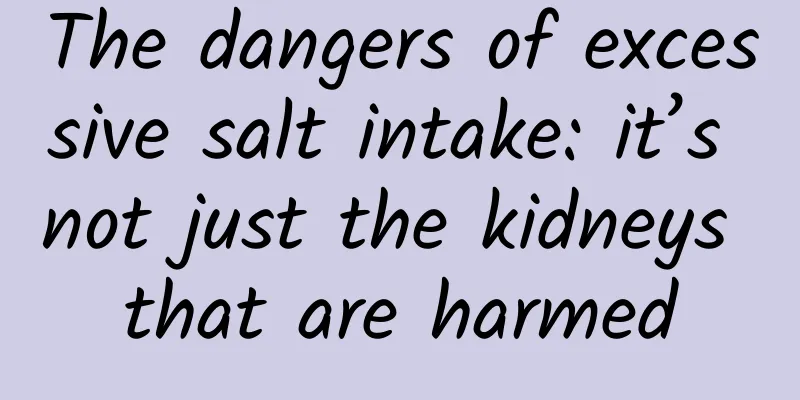Keep your muscles healthy and your bones young: A new strategy for healthy living for the elderly

|
Author: Tang Xiang, deputy chief physician of Beijing Huimin Hospital Reviewer: Han Wanwei, deputy chief physician of Beijing Huimin Hospital Sarcopenia and osteoporosis are common diseases among the elderly, which seriously affect their quality of life. Learn about the diagnosis, treatment and prevention measures of sarcopenia and osteoporosis to make the elderly's later years healthier and happier! 1. What are sarcopenia and osteoporosis? As people age, their muscle mass and bone strength gradually decrease, leading to decreased physical function and an increased risk of fractures. Sarcopenia refers to the gradual loss of muscle mass and strength with age, leading to reduced mobility. Patients may find that they are not as strong as they were when they were young, and it is difficult to lift things or walk. Osteoporosis refers to the thinning of bones, increased bone brittleness, and easy fractures. Maybe you didn't have to go to the hospital if you fell before, but now you have to go to the hospital if you fall. In addition to age, sarcopenia and osteoporosis are closely related to many factors such as genetics, nutrition, exercise, and hormones. Figure 1 Copyright image, no permission to reprint 2. How to determine whether you suffer from sarcopenia and osteoporosis? 1. Grip strength test: Try to clench your fist and feel your strength. Use a hand dynamometer to measure if the hand grip strength is less than 28 kg for men and less than 18 kg for women, which may be a sign of muscle loss. 2. Walking distance test: Try to walk as fast as possible within 6 minutes and measure the walking distance. This test can help understand muscle endurance and cardiopulmonary function. If the walking distance within 6 minutes is less than 360 meters, that is, the walking speed is less than 1 meter/second, it means that muscle endurance and cardiopulmonary function have declined. 3. Height changes: Measure your height every year. If you find that you are shorter than before, it may be a sign of osteoporosis, because osteoporosis can cause vertebral compression. 4. History of fracture: If an elderly person has ever suffered a fracture due to a minor fall or collision, it may also be a sign of osteoporosis. Of course, the most accurate diagnosis is to go to the hospital for a specialist examination, such as using dual-energy X-ray absorptiometry to measure bone density. 3. How to prevent sarcopenia and osteoporosis? 1. Aerobic exercise: It is recommended to do more than 150 minutes of aerobic exercise per week, such as brisk walking, swimming, jogging, Tai Chi, etc. Choose appropriate sports according to your physical fitness and health condition. Remember to avoid overwork. Brisk walking: Choose a flat surface for brisk walking, wear comfortable sports shoes, pay attention to the correct posture, and avoid lowering your head or bending over for a long time. You can start slowly and gradually increase the speed and time. Swimming: Choose a safe swimming environment, such as an indoor swimming pool, and learn the correct swimming skills under the guidance of a professional coach. Pay attention to the water temperature when swimming to avoid discomfort caused by overly cold water. Jogging: Since jogging has a greater impact on joints, it is recommended that the elderly start jogging under the guidance of a doctor and do it on a relatively soft surface, such as a plastic track. At the same time, pay attention to gradually increase the intensity of exercise and avoid suddenly increasing the amount of exercise. Tai Chi: It has low intensity and low impact on joints and muscles, and is suitable for elderly people with joint pain or chronic diseases. Long-term practice not only helps improve body flexibility, but is also beneficial for preventing muscle stiffness and joint aging. It can also improve balance and reduce the risk of falling. However, it is recommended to practice Tai Chi under the guidance of a professional coach to ensure accuracy and safety. Figure 2 Copyright image, no permission to reprint 2. Supplement protein: consume sufficient amount of protein every day, such as eggs, tofu, fish, lean meat, etc. Figure 3 Copyright image, no permission to reprint 3. Supplement trace elements: Calcium and vitamin D are essential for bone health. Milk, dairy products, tofu, green leafy vegetables, and fish are all good sources of calcium. Sunlight is a natural source of vitamin D. It is recommended to sunbathe for 15 to 30 minutes every day, or take vitamin D supplements under the guidance of a doctor. 4. Lifestyle: Quit smoking and limit alcohol consumption. Smoking and excessive drinking will accelerate the occurrence of osteoporosis. The elderly should try to quit smoking and drink less. Pay attention to anti-slip when at home and when going out, and try to avoid falling. You can install handrails in the bathroom and wear anti-slip shoes. 4. How to treat sarcopenia and osteoporosis? 1. Treatment of sarcopenia Keep exercising: It is very important to keep exercising. Even if you have signs of muscle loss, don't give up exercising. Reasonable resistance training and aerobic exercise can help restore some muscle function. You can also go to the sports medicine clinic, where the doctor can prescribe exercise for you. Figure 4 Copyright image, no permission to reprint Nutritional supplements: Under the guidance of a nutritionist, appropriate nutritional supplements, such as whey protein and amino acids, can help muscle repair and growth. 2. Treatment of osteoporosis Drug treatment: If you have been diagnosed with osteoporosis, your doctor may recommend taking some drugs, such as bisphosphonates, vitamin D and calcium supplements, which can help increase bone density. Hormone replacement therapy may also be an option for postmenopausal women with osteoporosis, but the relevant drugs must be used under the guidance of a doctor. 3. Traditional Chinese Medicine Treatment Traditional Chinese medicine also has rich experience in treating sarcopenia and osteoporosis. For example, men can use Chinese herbal prescriptions that nourish the kidneys and strengthen bones, such as Liuwei Dihuang Pills, combined with acupuncture, cupping and other therapies. Women can use Chinese herbal prescriptions that strengthen the spleen and replenish qi, such as Buzhong Yiqi Decoction, combined with massage, moxibustion and other therapies to improve physical fitness and enhance bone and muscle health. Figure 5 Copyright image, no permission to reprint |
<<: The "crystal" color continues to give cataract patients a bright "vision"
>>: Stroke: Know yourself and your enemy, and prevent it before it happens
Recommend
What should women drink for dysmenorrhea
Basically half of women have symptoms of dysmenor...
Latest research: It is expected to "crush" cancer-causing viruses in the cradle and "upgrade the navigation" of the immune system
The human body contains about 500 lymph nodes, an...
How much is the best degree to whip the egg whites of chiffon cake? Should the egg whites of chiffon cake be whipped to dry foam or wet foam?
We all know that there are many different ways to...
What is the germ yolk sac?
Many people have heard of the germ yolk sac. It i...
How many months into the pregnancy of a boy do you start to develop spots?
There is a folk legend that the appearance of spo...
Natural face slimming techniques
Don't just sit at home and do nothing, learn ...
What are the reasons why women cannot have children?
Getting married and having children are big event...
Women's waist circumference standard table
Not long ago, a "standard body shape list fo...
What causes menstrual pain in the waist?
Girls who have had their periods know that on the...
Can Panax notoginseng powder cure irregular menstruation?
Women often love and hate menstruation. Even if m...
Oral ulcers, joint pain...may be a problem with the autoimmune system
"The weather has changed a lot recently, and...
What causes joint cracking in pregnant women?
Mothers often encounter some troubles and problem...
Can I take medicine if I have allergies during breastfeeding?
It is common to have allergies during breastfeedi...
What to do when you are in menopause
The diet of menopausal women plays a very importa...









